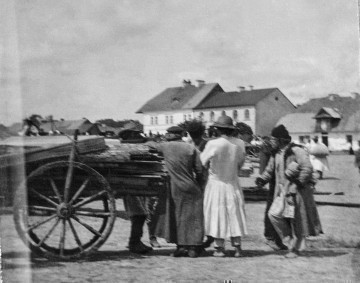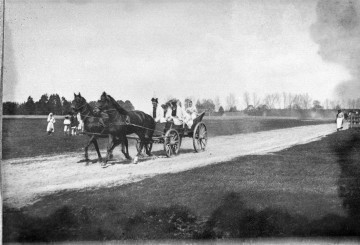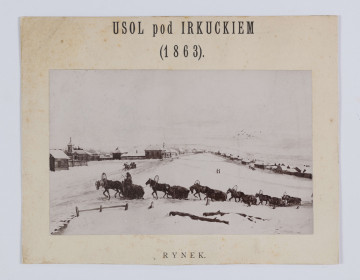
Market: men talking
1902
National Museum in Lublin
Part of the collection: Genre scenes
The post-Uprising repressions also seriously affected the cultural sphere. The possibilities for artistic education were minimal at the time. Gerson's private school played an invaluable role in this field. However, it provided only the basics of the workshop with the knowledge of art history. Those who were thinking about further development and a career could only go abroad. The young were most likely to choose studies in Munich. The active patronage of the ruling dynasty, the Royal Academy of Fine Arts, the numerous studios of acknowledged masters, the treasures of the Old and New Pinakothek, a well-functioning art market with annual exhibitions, associations overseeing cultural life, and a low cost of living made the capital of miniature Bavaria an important cultural centre in Europe.
In the second half of the 19th century, a Polish artistic colony was established there, which developed a recognisable type of painting with a programmatically Polish theme. One of the Munich artists who gained fame and recognition was Alfred Wierusz Kowalski. Like Maksymilian Gierymski or Józef Brandt, the artist did not take up historical themes in his work. His theme was the life and customs of the Polish countryside. He remained under the influence of these painters for a short time, but he quickly found an artistic niche and created his style with a set of characteristic motifs. Particularly valued by the public were the depictions of lone wolves against a winter landscape and the rides of various horse-drawn processions set in the native scenery. Wesele krakowskie [Kraków Wedding] is an example of this type of work. The painting uses all the painterly means to convey movement. The painter showed a colourful procession in Kraków folk costumes led by a rider. The effect of the dynamic movement was achieved by juxtaposing the scale of the foreground figure, which seems to be riding straight towards the viewer, with the figures appearing behind him, placed in the background. Those looking at the painting get an irresistible impression that they should move away, as they are only a short distance from the procession. The framing and shortening of the space intensify the dynamism and expression of the work. The background and contrast to the vivid scene are the flat snowy plains of the fields, with the frosty sky saturated with golden streaks, which is reflected in the ice-covered road so that the riders seem to be floating.
Bożena Kasperowicz
Author / creator
Dimensions
cały obiekt: height: 32 cm, width: 43 cm
Object type
painting
Technique
oil technique
Material
plank, oil-based paint
Creation time / dating
Creation / finding place
Owner
The National Museum in Lublin
Identification number
Location / status

1902
National Museum in Lublin

1902
National Museum in Lublin

1863
National Museum in Lublin
DISCOVER this TOPIC
Castle Museum in Łańcut
DISCOVER this PATH
Educational path